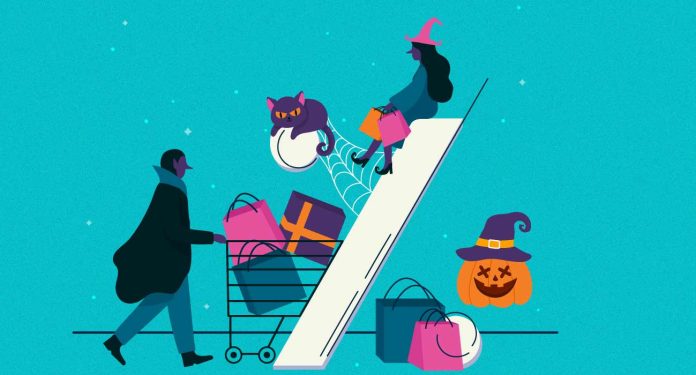From Fanta’s horror icons to Dunkin’s spider donuts, the best Halloween campaigns of 2025 proved October is the year’s boldest marketing playground.
The best Halloween campaigns of 2025 proved one thing: in the attention economy, October belongs to brands that give people something to do, not just something to see. From limited-edition packaging and monster-themed menus to AR try-ons and fandom tie-ins, this year’s standout campaigns transformed products into props, and weekends into full-blown experiences.
These are the Halloween campaigns that defined 2025 — collectible, interactive, and built to move effortlessly across stores, screens, and neighborhoods.
A Snapshot of the Season
- Global takeover: Fanta teamed up with Universal/Blumhouse to feature horror icons on collectible cans and cinema activations worldwide.
- QSR theatrics: Burger King launched its “Monster Menu,” remixing classics with ghoulish flair.
- Packaged-goods spectacle: Heinz Brazil released jet-black “Mayo Halloween,” embracing horror tropes with tongue-in-cheek style.
- Beverage buzz: Bacardí unveiled a limited Skeleton Bottle, pairing it with Halloween cocktail events and social content.
- Retail anchor: Spirit Halloween opened 1,500+ stores, cementing its role as the season’s costume trend barometer.
Fanta x Universal/Blumhouse: Horror Icons Go Global
Fanta’s collaboration with Universal and Blumhouse brought classic horror characters to collectible cans, uniting film and beverage fandom in a single gesture. The campaign spanned retail, cinema, and social media — an ambitious, cross-market rollout powered by influencer-driven storytelling.
With global consistency and cinematic energy, Fanta pulled off what few mass-market beverages can: a Halloween campaign that transcended packaging and became an experience.
Editorial takeaway: When packaging becomes the medium, storytelling travels farther — from the shelf to the feed.
Burger King: “Monster Menu”
Burger King’s “Monster Menu” transformed its standard fare into limited-edition creatures of the night. Each item — reimagined with eerie naming and bold visuals — invited participation, not just purchase.
Across digital menus, OOH, and app-exclusive offers, the campaign fed into a steady stream of user-generated content. By making its menu the IP, Burger King ensured the campaign stayed alive — one post, one bite, one costume at a time.
Key move: A limited-time menu is a social calendar in disguise.
Heinz Brazil: “Mayo Halloween”
Heinz flipped its own brand mythology with a perfectly gothic twist — launching a jet-black mayonnaise infused with black garlic.
Shot in the aesthetic of vintage horror cinema, “Mayo Halloween” turned condiment aisles into cultural conversation. The product itself — strange, beautiful, and instantly Instagrammable — became its own form of earned media.
Why it worked: The product was the campaign.
Bacardí: Skeleton Bottle & Spooky Serves
Bacardí’s limited-edition Skeleton Bottle made the liquor shelf feel alive again. Paired with themed cocktail recipes, in-person activations, and influencer-ready photo ops, the campaign leaned into lifestyle rather than costume.
By bridging home décor, mixology, and nightlife, Bacardí proved that seasonal branding doesn’t have to feel seasonal — it can feel collectible.
Editorial note: When packaging meets ritual, brands earn permanence.
Dunkin: Spider Donuts, Buckets & Onesies
Dunkin’s Halloween rollout — complete with Candy Bar Lattes, Spider Donuts, and a new Munchkins Bucket — blurred the line between menu drop and merch drop.
A spider-themed onesie and limited-edition plush turned fans into walking (and sipping) brand ambassadors. Smart timing — two weeks before Halloween — kept Dunkin in feeds and newsrooms alike.
Smart play: Merch makes the menu media-worthy.
Haribo: The “Sourest City in America”
Haribo’s Sour Sodas pop-up in Houston — dubbed “The Sourest City in America” — gave the brand local PR gold. A limited early-access release created scarcity and hype, while TikTok “first taste” videos did the rest.
It was a case study in how geo-specific activations can create national buzz through local emotion.
HI-CHEW: The House of Mystery
HI-CHEW’s “House of Mystery” pop-up blurred flavor with folklore. Fans were challenged to guess a secret flavor before Halloween, turning product sampling into a social game.
Anchored by a Halloween Day reveal, the campaign kept engagement high and user content steady — proof that suspense is still a marketer’s best friend.
Spirit Halloween: Scale as Strategy
Spirit Halloween doesn’t just participate in the season — it defines it. With over 1,500 pop-ups, a 50,000-person hiring drive, and its annual trend guide, the retailer sets the national tone for what Halloween looks like.
Every store opening is a local headline. Every costume list is an earned media asset.
Insight: Scale, when well-branded, is storytelling.
LEGO: Family Fun Meets Fandom
LEGO’s Halloween sets — from the Jack-O’-Lantern Pickup Truck to the Altar of the Dead — dropped as early as July, planting seeds for autumn wish lists. By October, its “Brick-or-Treat Monster Party” at LEGOLAND tied the narrative together in physical form.
The campaign demonstrated how to merge retail rhythm with experiential play — one of 2025’s strongest examples of brand world-building.
IKEA: KUSTFYR Returns
IKEA’s KUSTFYR collection continued its reign as the chic, minimalist side of Halloween. With ghost throws, lanterns, and string lights under $25, it made seasonal décor accessible — and social media–ready.
The collection’s understated aesthetic extended its life beyond Halloween, proving that not every holiday launch needs to shout to be heard.
Maybelline: “Try On If You Dare”
Maybelline’s virtual Halloween hub invited fans to experiment with bold looks through AR try-on technology. With tutorials and shoppable links, the brand turned costume makeup into a digital-first beauty experience.
It’s a strong example of how beauty brands can use interactivity to reduce friction — and boost conversions — during the busiest social month of the year.
Why These Campaigns Worked
The best Halloween campaigns of 2025 shared three key traits:
- Tangibility. Limited-edition products, merch, and pop-ups gave people something real to collect or visit.
- Interactivity. Gamified elements — from guessing flavors to AR try-ons — created reasons to return.
- Cross-channel design. Brands connected retail with digital, ensuring every SKU could live on a screen and in a cart.
From Fanta’s global horror icons to Dunkin’s spider bucket, these campaigns captured the season’s cultural pulse — turning October into not just a holiday, but a playground for creativity, commerce, and community.










